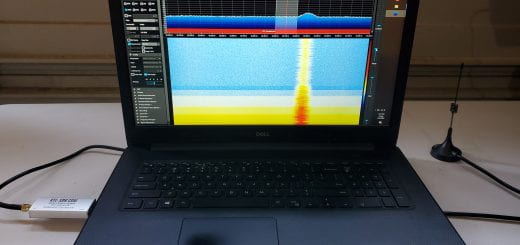Building Directional Antennas
In my last post I wrote about using radio beacons connected to the APRS or Automatic Packet Reporting Service for some of our DeArmond MakerSpace student’s projects. This is where a radio broadcasts data in a compressed form for quick delivery. It requires that on the radio-beacon-end that the data get encoded, and then decoded on the receiving end. This requires computers or computer chips embedded in radio receivers like the Kenwood D74 radio that we use. However, even if you don’t have this capability, you can always just use the signal strength of beacon to orient yourself in its direction. If you have two radios, widely spaced apart, you can draw two lines relating the direction of the strongest signal each radio receives and where the lines cross is the most likely position of the beacon. Signals can bounce and echo and that is why I qualified the issue in the previous sentence. Some of these issues can be solved using a directional antenna which can aid in determining where the strongest signal is coming from. For things that move around a lot, say a quadcopter, an omnidirectional antenna system is favored. This is because wherever the drone is nearby, you always want to communicate with it. However, for something that is stationary or moving in linear fashion, a directional antenna can be used to track the object over a much longer distance than the omnidirectional antenna could. If the object is moving, the directional antenna likewise needs to move in a sweeping arc to keep inline with the beacon.
A very cool thing about directional antennas is that they are easy to make! You can even make them out of wire coat hangers! Above is a picture of a 70-cm meter (440 MHz) antenna called a Yagi-Uda, after its inventors. The 70-cm Yagi-Uda is nice because it is relatively compact compared to its 2-meter (144 MHz) equivalent. However, the higher the frequency, the more precise the length of the antenna arms need to be. On a 2.4 or 5-Gigahertz household Wi-Fi router antenna, a millimeter difference in antenna length could be the difference of it working or not working.
We took our plans from ON6MU (http://users.belgacom.net/hamradio/schemas/yagi_uhf_antenna.htm). I used aluminum rods for the arms and 1cm by 10-cm long aluminum tube for the choke on the coaxial cable and then about 30-cm of 2.5-cm square aluminum tubing for the full support frame.
However, even though the systems are easy to build, it is important not to experiment too much with new non-validated designs unless you have a few testing tools. The wrong antenna on a radio can ruin the radio. I will try with an analogy. It’s not great, but I think it might help. Think of being in a spherical room and there is a hole in the wall where you job is to throw a ball through the hole. If you miss on your throw, the ball bounces back and hits you. Now, if the hole is mismatched, say too small for the ball, then every time you throw it, it will come back and hit you and the more energy you use to throw the ball the harder it comes back.
Here is ON6MU’s tested Guide:




